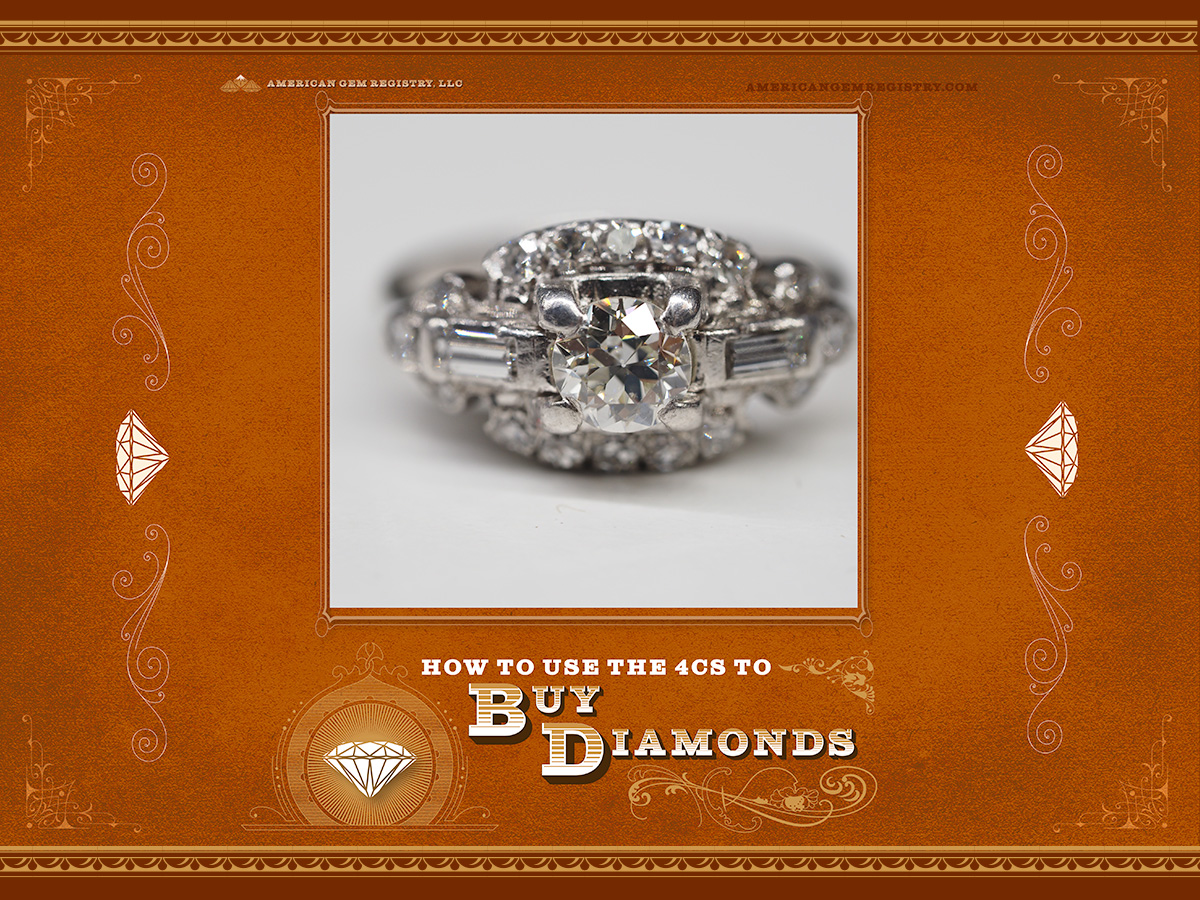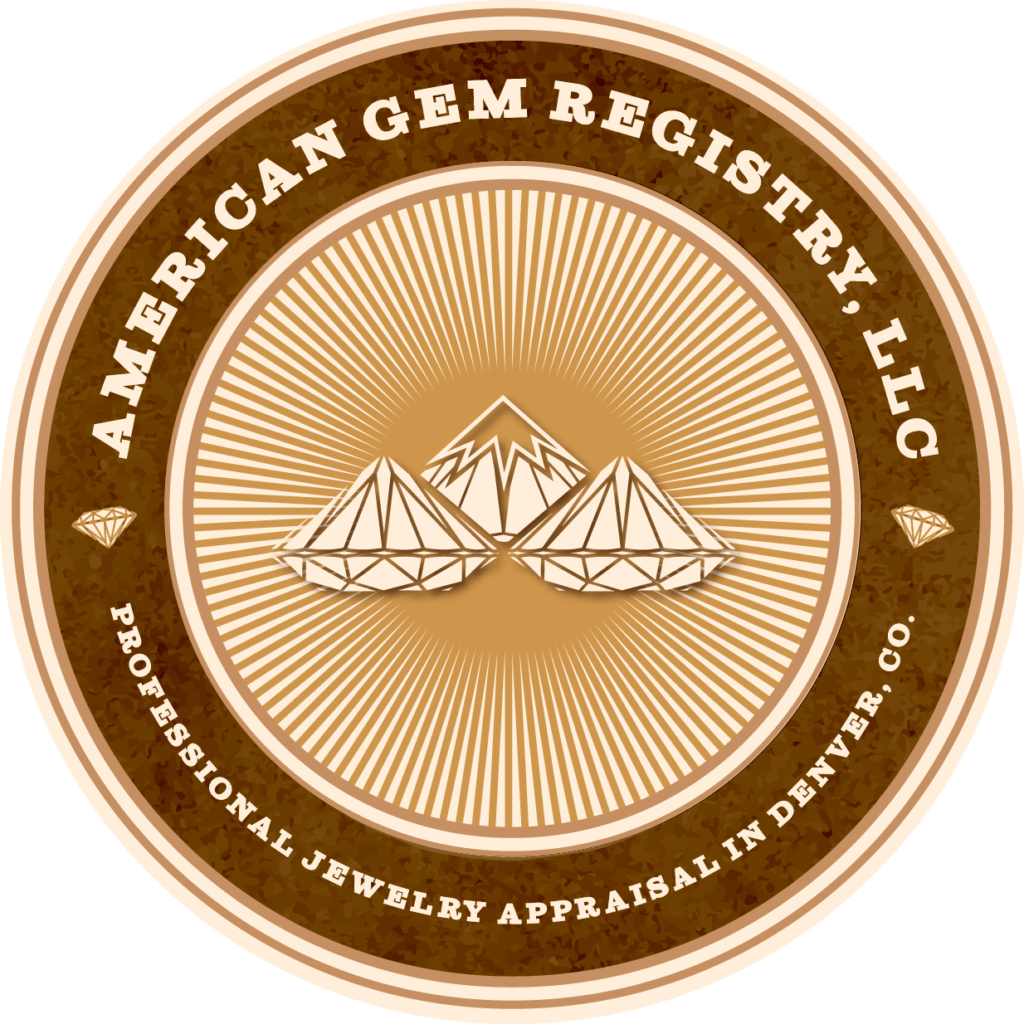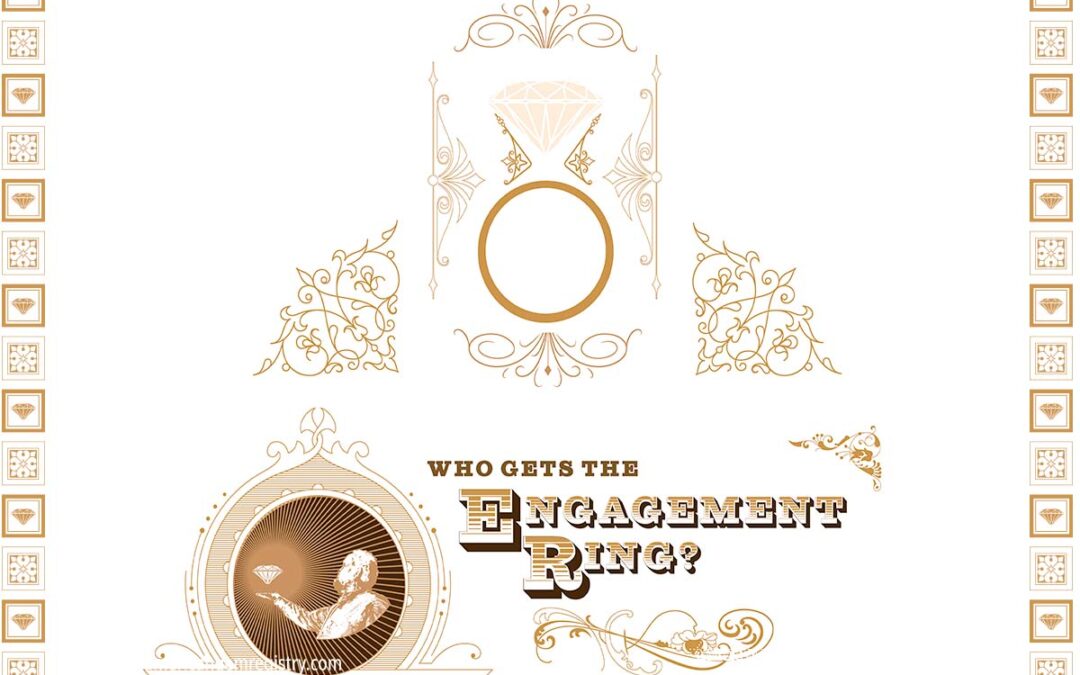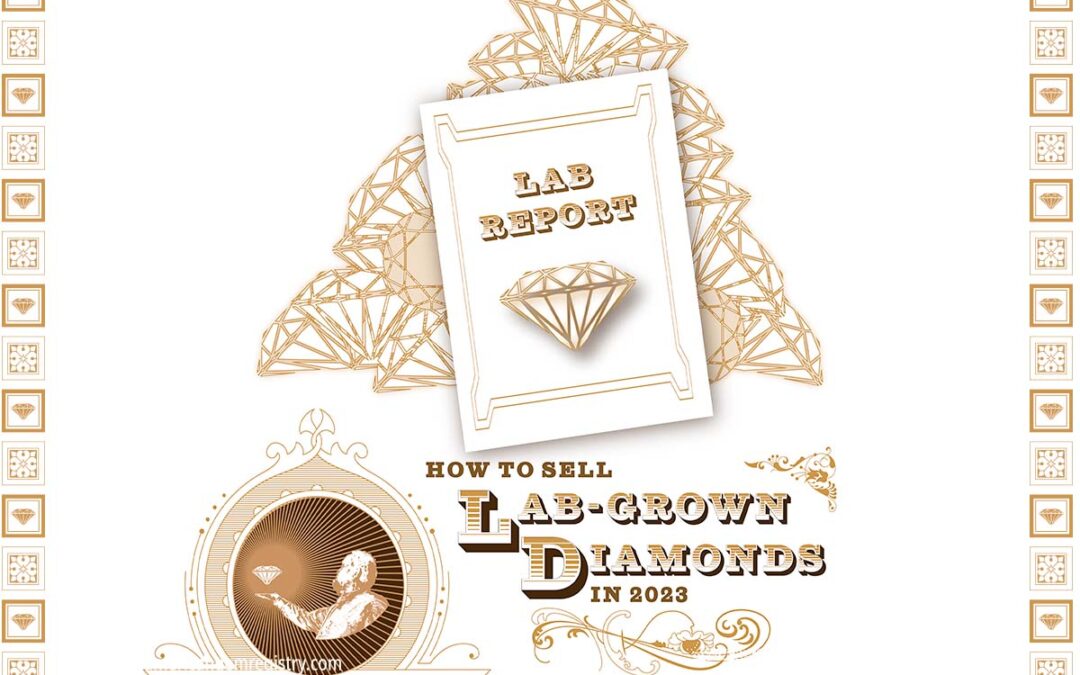Nearly everyone who is shopping for a diamond is familiar with the 4C’s: clarity, color, cut, and carat weight. It’s the traditional GIA grading scale for colorless diamonds.
www.gia.edu literally wrote the system and they have a free tutorial on their site. If you haven’t already done so, check it out.
But how do you use this scale to help you buy the right diamond for you?
Summary
- For nearly everyone, diamonds are a blind and expensive purchase. They range from a few hundred dollars to a few million, and 99% of the people, including the majority of jewelers, can’t tell you why.
- GIA was founded 80 years ago as a college to teach gemologists how to use the grading system they created—the 4Cs—cut, color, clarity, and carat weight.
- Modern GIA is a Grading Lab, as well as a college. The GIA Grading Report is the real reason you need to know about the 4cs.
- On any major diamond purchase, no lab report means no sale. Period.
- You’re shopping for a store as much as you’re shopping for a diamond. They are your ally in this, not your opponent…
- The 4C’s are what sets the price, but it’s mostly not where beauty comes in.
The Origins of the 4C’s
The GIA system is an 80-year-old piece of advice. Importantly, it was written as advice for jewelers on how to sell diamonds, not so much advice to consumers on how to buy them. That may seem like a subtle difference, but it’s important.
For nearly everyone, diamonds are a blind and expensive purchase. They range from a few hundred dollars to a few million, and 99% of the people, including the majority of jewelers, can’t tell you why. You were, and largely still are, just supposed to take it on faith that one diamond is ‘better’ than another. People would ask jewelers to help them pick a stone, and the jeweler had to say SOMETHING.
That was the origin of the 4C’s system, and of GIA in general: They were a college created to teach gemologists the grading scale they created—the 4C’s—to standardize the way jewelers talked about diamonds.
It’s changed.
The Modern GIA
These days, GIA is now primarily a lab that grades diamonds and other stones and issues reports that are widely known as ‘certificates’. They certify nothing, and GIA actively opposes the use of this term, but common-use language is like that. The official term is ‘Grading Report’. Whatever they’re called, they drive the prices, and EVERYONE is interested in the prices.
That’s the real reason you need to know about the 4C’s and it leads directly to one of the first rules for buying diamonds. Even this was about jewelers. When they started the lab to issue these reports it never occurred to them that it would be expected that consumers would shop using them. It is, and you should.
Get A Stone With A Grading Report
The GIA Grading Report is your #1 shopping tool for choosing a diamond, whether you’re online or in a store. If your budget is over a few thousand dollars, this is a deal killer. No lab report means no sale. Period. Your 4C’s are on there, and pricing is downstream of the 4Cs.
What Clarity Do You Want?
The GIA Diamond Clarity Scale—from ‘included’ to ‘flawless’—is one of the biggest determiners of price… and most “inclusions” aren’t even visible to the naked eye!
So pick your budget, and go from there. Pricing skyrockets right at VS1 so hold on to your hat.
What Color Grade Do You Want? The Missing Variable is You
The problem is in the scales. The GIA D-Z color scale has 17 grades… but most people are looking at above, say, K. (That’s 8 grades.) The typical requirement is that they don’t want to see face up visible color in the finished stone. (Note, GIA grades them from the side, not face up).
For most people and with most stones, this demising line for consideration is somewhere between G and K. 5 grades. That’s half the scale! More importantly, for most stones, that difference more than doubles the price. The big questions are ‘if you can see it’ and ‘if you care.’ Those aren’t attributes of diamonds at all. They’re attributes of you.
The solution here is as simple as it is old-school: Go look at some real diamonds.
Calibrate Your Eyes: Go Look At Real Diamonds
Look in a real jewelry store. Most of them don’t bite. (Leave the credit card at home if you’re worried.) You can always come back later if they happen to have exactly what you want.
What you’re doing on this early trip is calibrating your eyes and your head.
What colors can YOU see? It’s probably more subtle than you think. What about size? Even ‘big’ diamonds, say 2 carats, are pretty small and that comes with a big premium. A two carater is going to be about 4 times the price of an otherwise similar 1 carat. A 4 carater is going to be about 4 times the price of that. It’s a very steep curve that quickly leads to big big money.
Learn About “Cut”
Not to be confused with “Shape,” the Cut of a diamond has to do with the way light is reflected and refracted in certain ways within the gem to make it sparkle.
In the case of round stones, cut is mentioned on the GIA grading report but this is mostly an ‘off cert’ sort of detail. You’ll find a bit of variation from dealer to dealer on what they mean by this. Not everyone agrees about what makes one better than another.
What Shape Do You Want?
As with the color question, where you want to land on this isn’t a gemological question. It’s a fashion thing. To some extent it affects the price but really it’s about what you like. It’s your taste.
Don’t confuse this with cut (see above). A pear and a round are going to look very different from the top, but both as well-cut diamonds will sparkle with the best of them.
It’s good to get this out of the way early in the shopping process. (If you happen to be buying this diamond for someone else, I recommend researching their shape preferences thoroughly… but by-far-and-away the most popular diamond shape is the Round Brilliant.)
Again, look for lab graded stones only, and stick with the well regarded labs. If they show you a “J,” and it’s really an “M,” you are completely undermining the process of calibrating your eyes. They may have exactly what you want, and by all means come back and get it, but stay on point for the shopping process.
Lighting and Color Memory
If you’re going to shop at several different stores, (most people do), you’ll find lighting and color to be very difficult. Two identical stones may look completely different from one another because of the lighting… or just because you’re tired. It’s even affected by what you had for lunch.
Part of what you’re doing here is shopping for a store as much as you’re shopping for a diamond. The jeweler is your ally in this, not your opponent. This is one of the reasons it is so important to find a jeweler you like working with, and then work with them.
Proper Color Grading
As much as some of the internet vendors wish it were so, diamonds are not a commodity, and a GIA report doesn’t make them one. As you compare across two or more different stores, pay attention to the environment. Look at the lights. Look at the backgrounds.
Proper color grading is done on a white background comparing two stones that are millimeters apart and under a controlled lighting environment. Even then it’s difficult. Even the labs have several graders on every stone who will get different answers. Don’t try to turn yourself into a grader. This is about calibrating you, not second guessing the grading on the stones.
Beyond the 4C’s
How deep down the rabbit hole do you want to go? Because you can devote days or years to turning yourself into a diamond expert. There’s a lot more than 4 c’s. The 4C’s are where the price comes from, but it’s mostly not where beauty comes in.
That comes from the cutting. That’s in the symmetry and polish along with the proportions. Fluorescence. Treatments. “Ideal.” “Super Ideal.” There’s a long and deep rabbit hole here. They can all be important and it’s beyond the scope here to write about it all, but the most important thing is to know that there is more.
Designer Brands
If all of this is completely overwhelming to you, then your solution may be branding.
There are companies that will wrap it all together for you, for a fee. They’ll set their own cutting standards, they’ll vet the retailers for you, and you can just buy with confidence that you’ll get one that’s at least pretty good.
Tiffany comes to mind. No one goes in there looking for particular crown angles or even clarity and they control the process from mine to finger. Customers want a ring, they’ll get one, and they’re almost always happy about it. The grade they count as important is ‘Tiffany’.
‘Hearts on Fire’ is another example. They don’t sell directly but they choose their dealer network. You buy from one of them. HoF controls the brand and the authorized dealers deal with you.
Branding costs money, of course. Sometimes it’s even quite a bit. Sometimes not so much. That’s a difference in the dealer, not the stone(s). But if you don’t want to go through the trouble of becoming a diamond expert to purchase one measly gem, then this might be the path for you.
Professional Jewelry Appraisal in Denver, Colorado
The American Gem Registry provides a variety of jewelry appraisal services in Denver, Colorado:
- Gem and Jewelry Appraisals
- Estate Evaluations
- Expert Witness
- Pre-Custom Consultation
- Re-Cut Consultation
- Damage Consultation
- Restoration Evaluation
- Re-Cut Consultation
If you have any questions, please call during my normal business hours at the number below. Or, you can schedule your Jewelry Appraisal Appointment online today!








